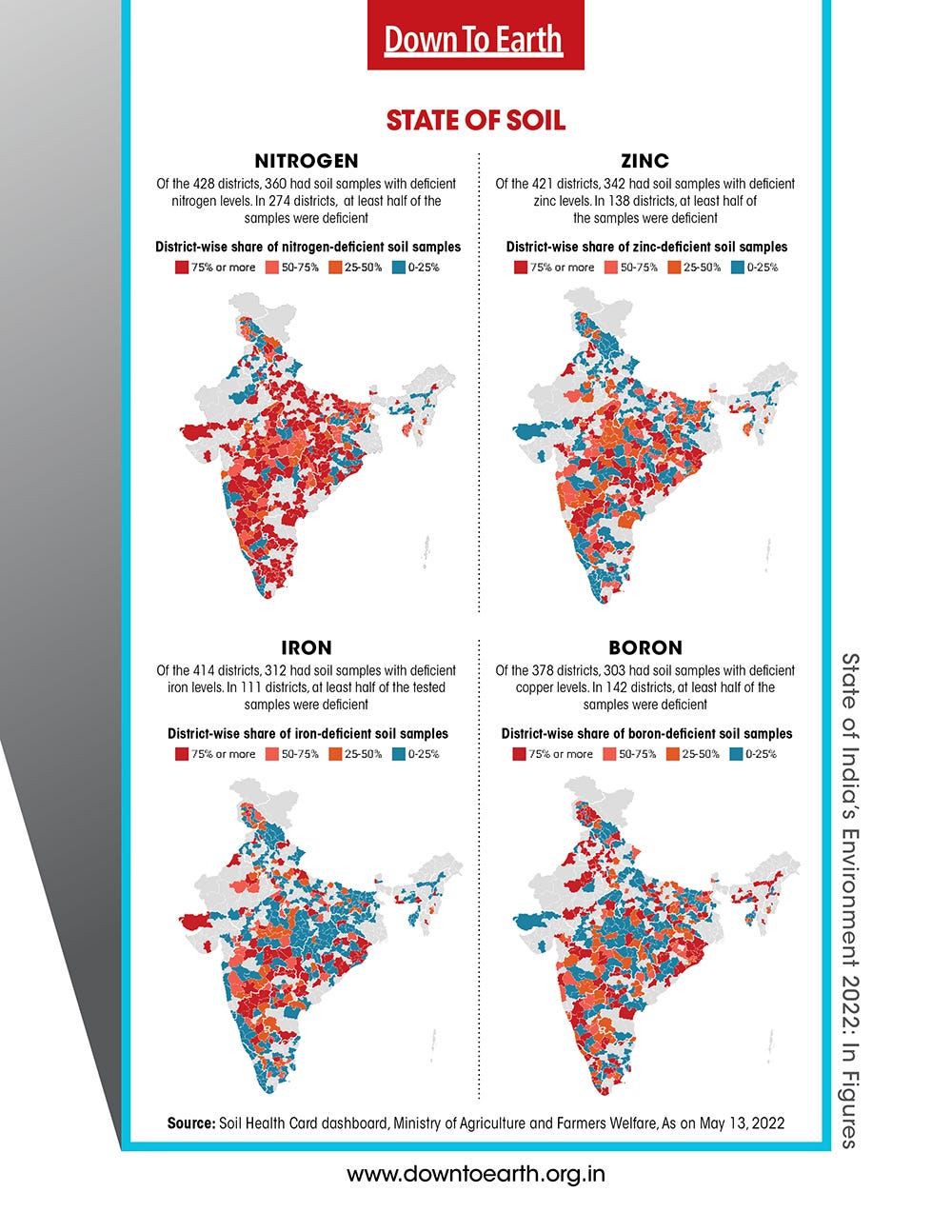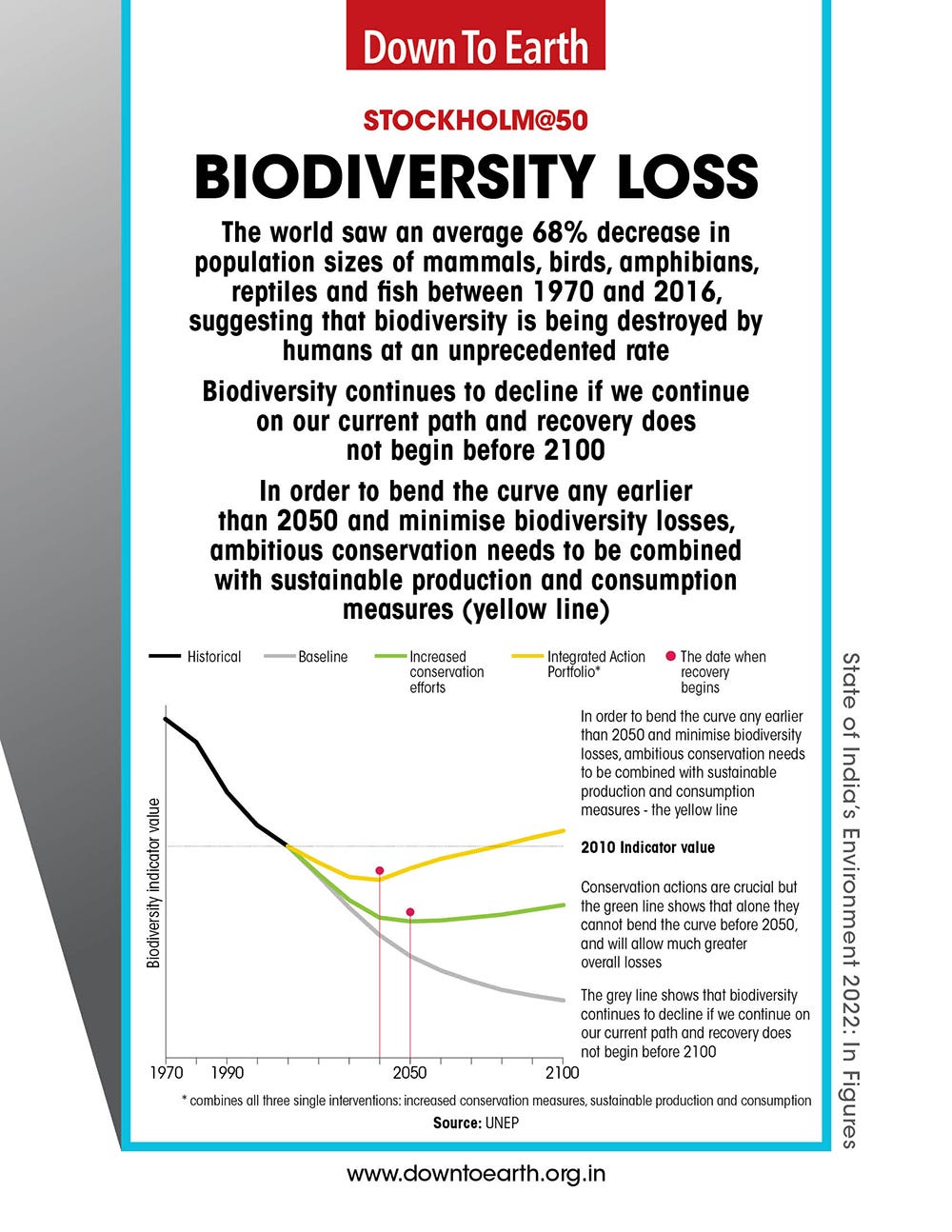Saturday Sprouting Reads (Agritech Marketplaces, State of Environment, Inequity in Agriculture)

Dear Friends,
Greetings from Hyderabad, India! My name is Venky and I write Agribusiness Matters. Welcome to Saturday Sprouting Reads!
About Sprouting Reads
If you've ever grown food in your kitchen garden like me, sooner than later, you would realize the importance of letting seeds germinate. As much as I would like to include sprouting as an essential process for the raw foods that my body loves to experiment with, I am keen to see how this mindful practice could be adapted for the food that my mind consumes.
You see, comprehension is as much biological as digestion is.
And so, once in a while, I want to look at one or two articles closely and chew over them. I may or may not have a long-form narrative take on it, but I want to meditate slowly on them so that those among you who are deeply thinking about agriculture could ruminate on them as slowly as wise cows do. Who knows? Perhaps, you may end up seeing them differently.
All Agritech Marketplaces Are Not Created Equal
Most agritech founders I see in my midst are great at execution. Going by what I am seeing in my limited sample size, they don’t seem to be great at articulating the atomic concepts that can effectively position the marketplace they are building.
In this subscriber-only article, I mapped the atomic concepts of agritech marketplaces on the X-Axis along with two-factor market players on the Y-axis across the Indian Agritech ecosystem.
The result was an attempt to see the forest of full-stack agritech marketplaces alongside the trees.
If you pay attention to the forest, it tells you so many things - Where do you see the crowding of agritech marketplaces? Where are cross-side network effects happening? Where are blue oceans and red oceans inside agritech marketplaces?

State of Environment 2022
While the forests of agritech marketplaces may seem like an interesting bunch of darts thrown by enterprising agritech founders and VCs, to really understand what’s happening underneath, it is vital to pay attention to the ground realities.
What does the ground reality in Indian agriculture look like at the moment?
“The cost of cultivation has increased in India by almost 35 per cent between 2012-13 and 2018-19, and the share of the income from cultivation in an agricultural household has gone down from 48 per cent in 2012-13 to 37 per cent in 2018-19. “ [Source]
To understand why this is so, it may be helpful to pay attention to the state of the soil.
While the production side of numbers may seem unpleasant, things hit you in the gut on the consumption end.
‘Consumer food price index (CFPI) inflation has seen a 327 per cent increase in the past year, while the consumer price index (CPI) – which includes CFPI -- has seen an 84 per cent jump. ‘
As CFPI data indicates, food prices have increased in rural areas more than in urban in March and April 2022.
Why has rural inflation been higher than urban inflation?
Vivek Kaul intuits one likely explanation through the words of the economist Pranjul Bhandari:
“The prices of kerosene used for lighting… are not regulated and have risen sharply.” In comparison, the price of electricity, which is the primary source of lighting in urban areas, has been largely flat over the past year.”
If data such as these are tempting agriculturists and policymakers to make food cheaper for the 71% of the Indian population who cannot afford a healthy diet, well, I present to you, the state of biodiversity data.
The moral of this painful warm data story is this: Conservation efforts are not sufficient. We need to make transformative measures in food production and consumption.
In other words, the central question that is staring at those of us looking at food and agriculture systems is this: Can we feed the world without devouring the planet?
WTO Ministerial Conference in Geneva: Finishing The Unfinished Business of Reducing Inequity in Agriculture
On June 12th, India’s Commerce Minister Piyush Goyal is expected to participate in the twelfth edition of the World Trade Organization’s (WTO) Ministerial Conference (MC-12), happening in Geneva.
Regular reader and subscriber of Agribusiness Matters, Rajeev Mantri, writes this interesting piece to enumerate the challenges India will face when it presents its proposal for the Agreement on Agriculture at the negotiation table.
The proposal envisages a more logical basis for calculating price support for public stockholding, fixing the reference price using prevailing market prices or proposing an inflation-adjusted calculation mechanism. This provision aims to ensure that even in the future, developed countries should not revisit the permanent entitlement of public stockholding under the pretext that such subsidised purchases had become very high and were thus trade-distorting.
The proposal also calls for allowing members to export from their public stocks for the purposes of international food aid, non-commercial humanitarian purposes and for bilateral food diplomacy. This is a key limitation of the present Agreement and Prime Minister Narendra Modi has spoken of WTO building in such flexibilities in recent months.
Will India be to able to manoeuvre its way through and assert its demands at the negotiation table?
I haven’t tracked the tricky terrain of food geopolitics so far in this newsletter. Now that distribution-driven, production-driven food shortages are likely in Europe in the aftermath of war and climate shocks, I will attempt my best to see if I can make sense of this.
So, what do you think?
How happy are you with today’s edition? I would love to get your candid feedback. Your feedback will be anonymous. Two questions. 1 Minute. Thanks.🙏
💗 If you like “Agribusiness Matters”, please click on Like at the bottom and share it with your friend.




